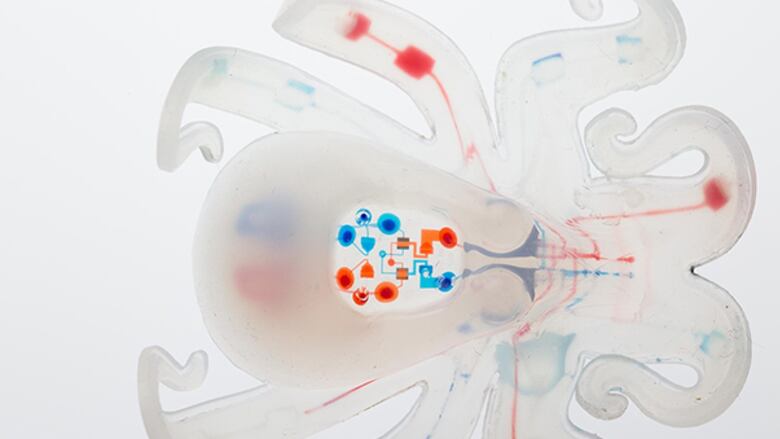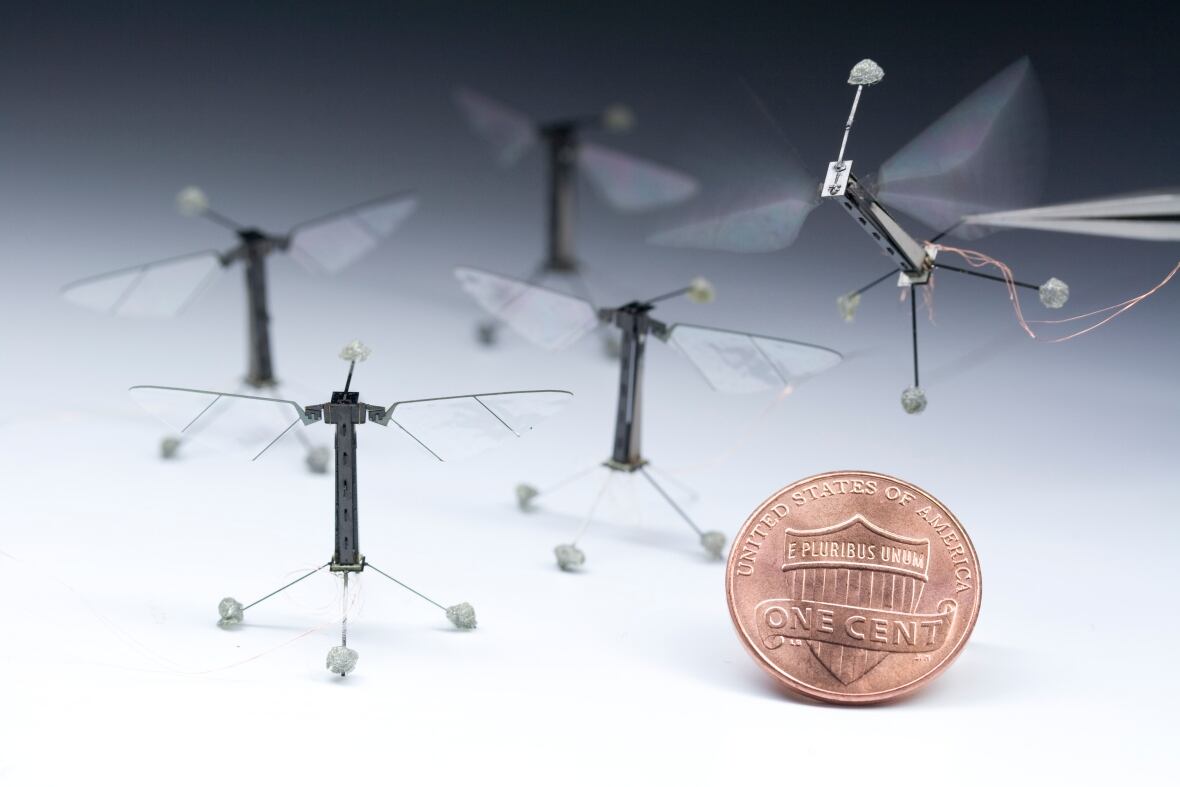Squishy 'Octobot' may point to future of robotics
Pliable Harvard-built 'soft robot' features no rigid parts, could be used in internal medicine

When you think of a robot, you probably imagine a metallic humanoid — and indeed, most robots today have hard, rigid bodies made of metal and plastic.
But the robots of the future may actually be a bit more soft and squishy.
CBC Radio technology columnist Dan Misener looks at the softer, more flexible robot nicknamed the "Octobot."
What is the Octobot?
Imagine a robot octopus. That's what we're talking about.
The Octobot was created by a team at Harvard University. It's about 6.5 centimetres across — smaller than your palm. And it's an example of what's called "soft robotics."
Unlike most robots out there, the Octobot is pliable. It has no rigid parts whatsoever — no batteries, no circuit boards, no electronics. Instead, the entire robot is 3D-printed out of silicone rubber.
And it's powered by hydrogen peroxide, which starts as a liquid, and then gets turned into a gas — which flows into the Octobot's limbs, inflating them like balloons. It's a pneumatic system, which looks very cool — but is also perhaps slightly unsettling to watch.
The Octobot is a great example of the emerging field of "soft robotics" — robots that are bendy, squishy and pliable.
What are the advantages of soft robots?
Michael Wehner is part of the team at Harvard that developed the Octobot, and he said soft robots are particularly well-suited to tasks that require a very light touch — like picking up an egg.
"[It could] either handle something that's very delicate, or move the body around to get into tight spaces in search and rescue, or maybe internal medicine," he said.
"Something that's soft like an earthworm could crawl through the body better than something that's rigid, like a crab."
Yes, he's talking about soft robot medical worms crawling around inside your body.
Soft robots also have an advantage when they're working around humans. A rigid robot made of metal or plastic can be very dangerous, whereas a soft robot made of silicone has the potential to be a lot safer.
What other animals have inspired soft robots?
A lot of the early work in soft robotics has been inspired by nature, especially by flexible creatures. So researchers have built robot jellyfish, robot caterpillars and robot fish.
The robot fish, for example, is particularly good at escape manoeuvres. Because its body is flexible, the robot fish can change direction in a fraction of a second, which is almost as quickly as a real fish, according to MIT researchers.

For instance, researchers at Harvard have built flying robot bees about the size of a penny. And they've also built crawling robots, inspired by insects. Most of these are proof-of-concept designs, but they point toward one possible direction for robots of the future.
What challenges do soft robots face?
Ryan Truby is another one of the Octobot researchers, and he said conventional robot parts — like batteries, circuit boards and sensors — are still used because they work pretty well. So the challenge for soft robots is finding viable alternatives.
"We're a bit off still from seeing really cool, entirely soft systems, like the Octobot, that are going to be able to sense their environment, [and] move and react to stimuli," he said.
"I think the next steps forward are not entirely soft systems, but almost entirely soft systems."
So the future may be robots that combine the best parts of both approaches — hard and soft.
When might we start to see soft robots in use?
Soft robotics is still an emerging field, and a lot of the work that's being done is still at the research level.
That said, we're starting to see elements of soft robotics starting to make their way out of the lab. For instance, some underwater robots now use soft grippers when they're at the bottom of the ocean so they can explore coral, and do scientific work without harming the environment.
Wehner and Truby believe those types of soft grippers are the next step in commercializing this kind of robotics. Again, this becomes especially important when robots are working closely alongside humans. There's a safety issue there.
They hope the work they're doing will lead to more human-robot interaction — though I'm not sure if I'm ready to let a soft robotic medical worm crawl around inside me quite yet.

